Elbert Henry Knox
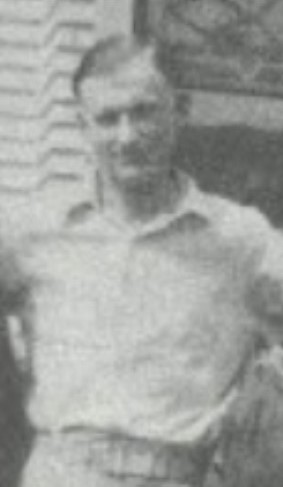
- Unit: Civilian Carpenter, Wake Island
- Date of Birth: December 30, 1900
- Date of Death: January 15, 1944
- Hometown: Paris and Cuba City, Wisconsin
- Place of Death: Fukuoka POW Camp #18, Japan
Mentored by Mrs. Naomi Peuse
Tomorrow River School District/Weyauwega-Fremont School District
2022/2023
Early Life
Elbert Henry Knox was born to William and Theresa Knox on December 30, 1900. He grew up in Cuba City, Wisconsin, a small rural town known as the City of Presidents. Elbert attended school in Dickeyville, Wisconsin, completing his education through the eighth grade. He had two older brothers, Earl and Jesse.
Elbert was known locally as “Toughegg.” Jesse, his brother, often said that Elbert would “rather fight than eat.”
At age 19, Elbert joined the United States Army. His family had a history of military involvement. His grandfather had served in the American Civil War, and both brothers saw active duty in World War I. As part of the U.S. Army, Private Elbert Knox served as a cook in the medical department at a hospital in Illinois. After his term of one year of service, from December 13, 1919, to December 12, 1920, he was honorably discharged.
After returning home, Elbert transitioned back to civilian life. He had some run-ins with the law, and his community saw him as a tough character. However, people respected him, and he was a skilled worker.
Elbert was a carpenter by trade, like his father before him. This skilled trade helped him secure contracted war work during World War II.

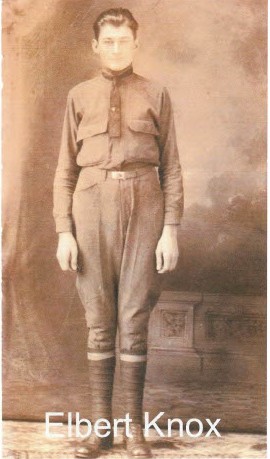
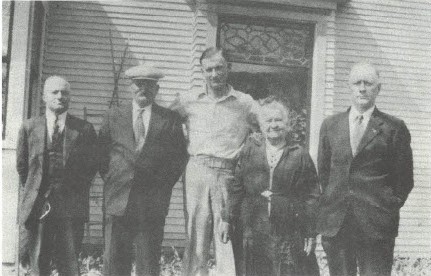
Homefront
World War II allowed people to escape the depths of the Great Depression by creating jobs; Wisconsin was no exception. Wisconsin residents stepped into a variety of jobs to support the war effort from 1940 to 1945. In Manitowoc, shipyards churned out submarines and trained sailors, plopping the submarines into Lake Michigan. The Badger Army Ammunition Plant, a munitions factory, was built in Sauk Prairie, becoming the largest munitions factory in the world at the time. An airport, known now as Truax Field, was used for radio communication training. Colleges such as the University of Wisconsin offered classes on military training. Camp McCoy in Monroe County served as a basic training facility.
In rural southwest Wisconsin, where Knox lived in Grant County, communities did what they could to support the war effort. War bonds were sold in the theater while farmers increased production in the fields. Men could receive a two-year deferment from the draft if they worked on a farm. Children helped to collect materials necessary to the war effort, such as scrap metal.
Like in other parts of the United States, the number of marriages spiked. Young men married young women before going off to war, often leaving them to raise children alone. With so many men away at war, there were not enough workers to aid the war effort. This led to many women taking jobs outside the home.
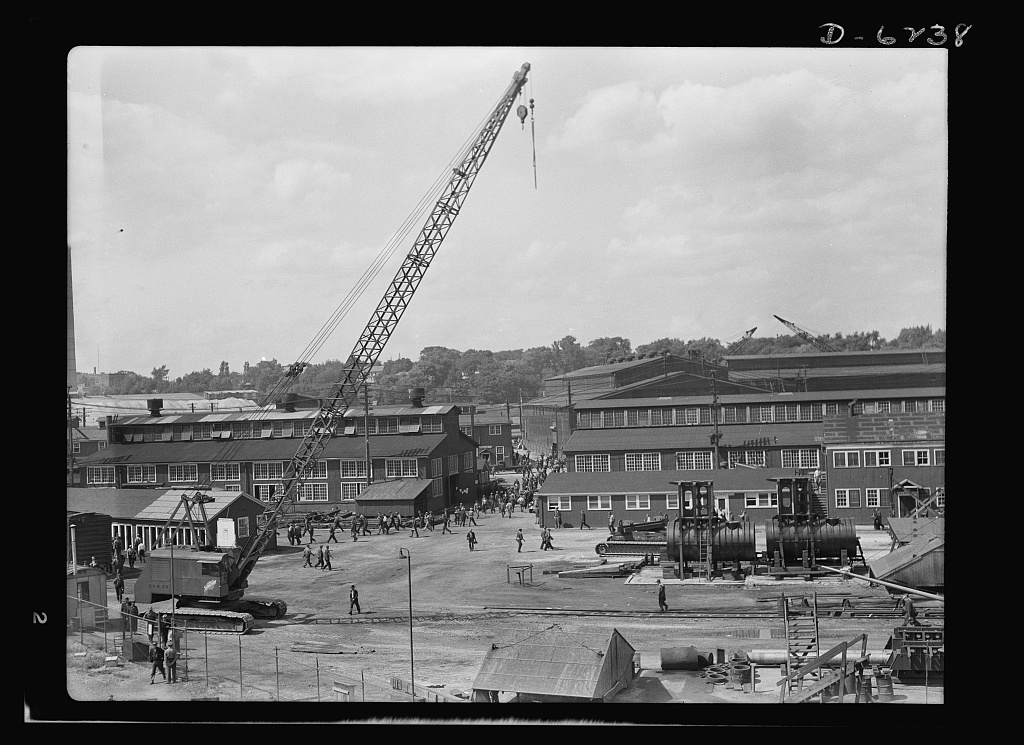
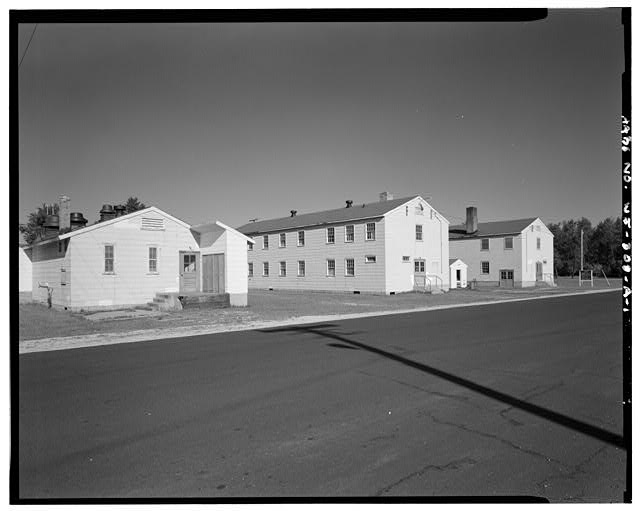

Military Experience
In response to Japan’s ever-growing empire, the United States Navy’s Bureau of Yards and Docks expanded to include the Contractors Pacific Naval Air Bases (CPNAB). Morrison-Knudsen Corporation (M-K) was hired in March 1940 to build airfields and Naval bases on Midway and Wake Islands. Construction on Wake began in January 1941. M-K constructed most of the buildings, laid the airfield, and dredged the lagoon for seaplane landings and a submarine base.
In 1941, M-K hired Elbert Knox to work on Wake Island. He was expected to arrive at Wake with a complete set of his own tools. To acquire them, he went through his coworkers’ toolboxes in Cuba City, taking one tool from each man’s box to create a full set for his journey. By the time the men discovered the missing tools, Knox was long gone.
On September 26, 1941, Knox left Wisconsin, arriving on Wake Island on October 12, 1941. The men encountered no shortage of problems building on Wake: expensive equipment broke down, indecision on building plans caused delays, and dangerous typhoons swept through the atoll. The pay was extremely good with monthly incentive bonuses, but turnover was high. Homesickness, isolation, and the lack of women and alcohol made the average stay just six months.
Before December 7, 1941, many Americans believed that U.S. military forces were superior to the Japanese. The December 7, 1941, strike on United States military bases fractured that misguided confidence. On December 8, 1941, Japanese forces attacked Wake Island (Wake Island is located west of the International Date Line).
Wake Island, though small, was of great military importance due to its strategic position in the South Pacific, in proximity to Japanese-controlled territory. The attack on Wake Island occurred in conjunction with the bombing of Pearl Harbor. For 15 days, 400 Marines and 1,145 civilian workers fought valiantly, rebuilding and defending Wake Island against the bombardment and an attempted land invasion.
On December 23, 1941, the Americans were overwhelmed and surrendered—though Japanese losses were substantial. All U.S. Marines and civilians were taken prisoner. Most of the men were sent to occupied China in January 1942. The remaining contractors continued working on Wake under the Japanese. Knox was among those who remained on the island until September 20, 1942, when 202 of the contractors were sent to Japan.
Knox traveled to Yokohama, Japan on one of Japan’s infamous “hell ships,” the Tachibana Maru, an Imperial Japanese Navy hospital ship. Japanese hell ships were overcrowded to the point of suffocation and offered very little food or water. From Yokohama, Knox was transported to the Fukuoka Prisoner of War Camp #18 B, in Unuki. Knox and the other Prisoners of War (POWs) arrived in the camp on October 12, 1942. They built the Sasebo (Soto) Dam.
The Japanese guards abused American POWs. Most of the goods and medicine the International Red Cross provided were withheld. Adequate medical attention was scarce, and the men suffered through back-breaking labor on minimal food rations. They also endured Japan’s bitterly cold winters without adequate clothing.
Knox used a camp blanket to make an article of clothing—some affidavits claim it was a shirt, others say it was socks—to try and keep warm. His actions caught the attention of the camp commander, Lieutenant Uichi Ikegami.
As punishment, Knox, who stood more than six feet tall, was placed in a four-foot square solitary confinement cell. The open-air prison exposed Knox to temperatures around zero degrees Fahrenheit. On January 15, 1944, Elbert Knox died from malnutrition and exposure after being beaten and denied sufficient food, water, and warmth.
Lieutenant Ikegami, whose orders resulted in Knox’s death, was brought to trial after the war. He was convicted and sentenced to death by hanging. However, his sentence was amended to 25 years. Ikegami was released after serving six years.
Shortly after World War II, Knox’s remains were exhumed from his Japanese grave and laid to rest in the National Memorial Cemetery of the Pacific. He is also memorialized in his hometown—listed on a monument for his service in World War I. Knox’s name was also engraved on a plaque at the Soto Dam, listed among 66 others who died during the dam’s construction.
Knox and the other Wake Island Defenders were celebrated during and after the war for their determination and sacrifice. All civilian contractors on Wake Island received World War II veteran status in 1981.
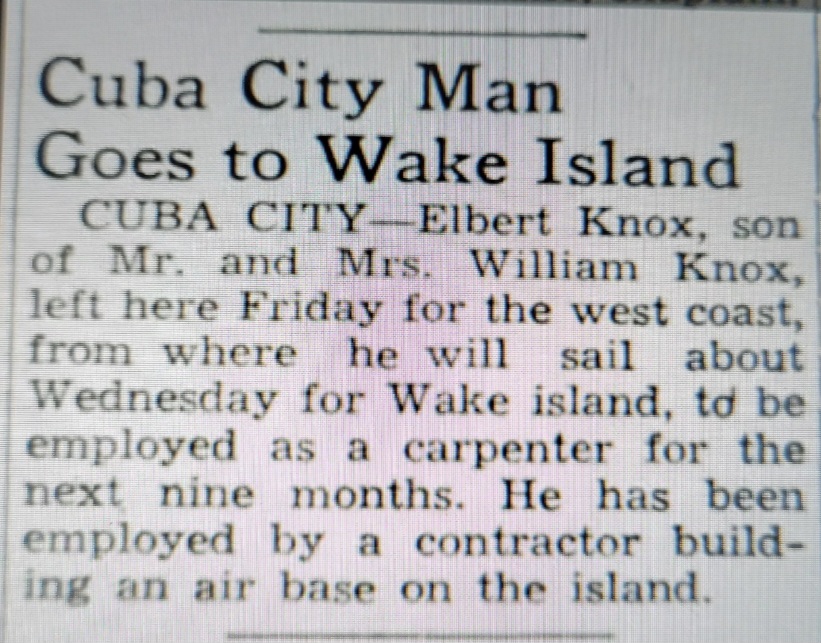
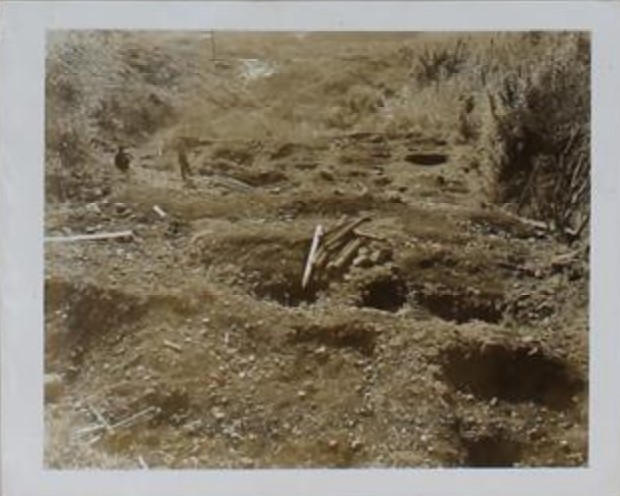

Eulogy
Elbert Henry “Toughegg” Knox was a soldier for the United States of America. However, he was not enlisted in the military during World War II, instead working for the war effort as a civilian contract worker. During World War I, he did serve his country as an Army cook from December 1919 to December 1920, following in his brothers’ footsteps.
Yet, in September 1941, at the age of 40, Knox again left his small hometown of Cuba City, Wisconsin, and traveled 4,000 miles across the Pacific Ocean to work for the military on an island that was only two-and-a-half square miles large.
Knox and other civilians constructed Wake Island’s mess hall, hospital, airstrip, barracks, and more. These structures helped the Marines and contractors to resist a Japanese military strike on December 8, 1941.
Though the Marines and contractors fought hard, the Japanese captured Wake after a 15-day battle. After months as a prisoner on Wake, Knox was transported to Japan in September 1942, where he continued to show strength and resilience. He tried to keep himself alive by making an article of clothing out of a blanket and was punished severely for his actions.
Knox was locked in a solitary confinement cell, abused, starved, and exposed to bitter temperatures. He suffered and eventually died of malnutrition and exposure.
Shortly after World War II, Elbert Knox’s remains were exhumed and laid to rest in the National Memorial Cemetery of the Pacific. During and after the war, the United States celebrated the Wake Island Defenders as heroes for their determination and sacrifice. Knox, along with all civilian contractors on Wake, received veteran status in 1981.
Elbert Knox, though not an enlisted soldier, gave his life in service to his country. He chose to leave his home and family to dedicate his expertise to the war effort. Thank you, Elbert Knox, for your service.



Reflection
I believe that this program has helped me to develop my research skills and understand the importance of historical research. It gave me the opportunity to learn more about genealogical research and how to track down information online. At the University of Wisconsin – Platteville, I learned how archives work and how to use microfilm. These experiences will help me in college as I plan to pursue an English degree and possibly complete historical research.
I believe that the program’s overarching name, Sacrifice for Freedom®, is very fitting for this trip. I had many unique experiences in Hawaiʻi, and the people I met–students, teachers, researchers, and tour guides alike–were amazing. However, the one part of the trip that stands out is related to the term sacrifice. I am a very emotional person, especially when it comes to topics such as death and war. Yet, it can be hard for me to grasp the impact of sacrifice when only reading the numbers of casualties and fatalities. But when you are able to look over the fields of headstones at the National Memorial Cemetery of the Pacific or walk the grounds that saw so much bloodshed, your brain finally begins to process all of those numbers. And when you narrow that research down to the individuals who experienced great tragedy, their lives suddenly solidify and become real. That is what I loved about the Silent Hero Project. I want to be a writer someday, and one of the techniques utilized to humanize a giant conflict is to show that pain and emotion through individuals’ stories. There was an abundance of these unique stories that I heard throughout the trip, which is something that really defined this experience for me.
While talking to the family members of team Wisconsin’s Silent Hero, Elbert Knox, it hit home that the small anecdotes they told me will not always be available. I am fortunate to have found personal stories about Elbert Knox, other families may not have the chance to share those stories with the world. I’ve realized that the more time we wait to preserve the histories of individuals, the harder it will become as more and more information is lost to time.
Bibliography
Primary Sources
Aki, Patrick. Oral interview. February 25, 2011. Japanese American Military History Collective. https://ndajams.omeka.net/collections/show/750.
Aki, Patrick Kahaumea. Affidavit. September 17, 1945. Supreme Commander for the Allied Forces (SCAF), Legal Section, Administrative Division “Area” Case File, 1945-48, Fukuoka POW Camps #13-#14. National Archives and Records Administration (RG 331, Box 925). Roger Mansell Collection, Hoover Archives. http://www.mansell.com/pow_resources/camplists/fukuoka/fuku_18_sasebo/FUK-18_Affidavits_RG331Bx925.pdf.
Anderson, Roy Lee. Affidavit. September 20, 1945. Supreme Commander for the Allied Forces (SCAF), Legal Section, Administrative Division “Area” Case File, 1945-48, Fukuoka POW Camps #13-#14. National Archives and Records Administration (RG 331, Box 925). Roger Mansell Collection, Hoover Archives. http://www.mansell.com/pow_resources/camplists/fukuoka/fuku_18_sasebo/FUK-18_Affidavits_RG331Bx925.pdf.
Astarita, Joseph J. Sketches of P.O.W. Life. Brooklyn: Rollo Press, 1947.
Barnett, Ryland Francis. Affidavit. January 30, 1946. Supreme Commander for the Allied Forces (SCAF), Legal Section, Administrative Division “Area” Case File, 1945-48, Fukuoka POW Camps #13-#14. National Archives and Records Administration (RG 331, Box 925). Roger Mansell Collection, Hoover Archives. http://www.mansell.com/pow_resources/camplists/fukuoka/fuku_18_sasebo/FUK-18_Affidavits_RG331Bx925.pdf.
Barney, John Franklin. Affidavit. August 6, 1946. Supreme Commander for the Allied Forces (SCAF), Legal Section, Administrative Division “Area” Case File, 1945-48, Fukuoka POW Camps #13-#14. National Archives and Records Administration (RG 331, Box 925). Roger Mansell Collection, Hoover Archives. http://www.mansell.com/pow_resources/camplists/fukuoka/fuku_18_sasebo/FUK-18_Affidavits_RG331Bx925.pdf.
Baylor, Walter L. J. Last Man Off Wake Island. Indianapolis: The Bobbs-Merrill Company, 1943.
Bowen, Ray Elven. Affidavit. July 9, 1947. Supreme Commander for the Allied Forces (SCAF), Legal Section, Administrative Division “Area” Case File, 1945-48, Fukuoka POW Camps #13-#14. National Archives and Records Administration (RG 331, Box 925). Roger Mansell Collection, Hoover Archives. http://www.mansell.com/pow_resources/camplists/fukuoka/fuku_18_sasebo/FUK-18_Affidavits_RG331Bx925.pdf.
“Builders Receive Draft Deferment.” The Ogden Standard-Examiner [Ogden, Utah], March 24, 1941. Newspapers.com (596748824).
Burns, Edgar Franklin. Affidavit. August 23, 1946. Supreme Commander for the Allied Forces (SCAF), Legal Section, Administrative Division “Area” Case File, 1945-48, Fukuoka POW Camps #13-#14. National Archives and Records Administration (RG 331, Box 925). Roger Mansell Collection, Hoover Archives. http://www.mansell.com/pow_resources/camplists/fukuoka/fuku_18_sasebo/FUK-18_Affidavits_RG331Bx925.pdf.
“Convict Jap of Brutality to Prisoners.” Del Rio News-Herald [Del Rio, Texas], May 2, 1946. Newspapers.com (9475347).
“County Court.” The Bloomington Record [Bloomington, Wisconsin], May 7, 1947. Newspapers.com (674831779).
“Cuba City Man Goes to Wake Island.” Wisconsin State Journal [Madison, Wisconsin], September 29, 1941. Newspapers.com (405266475).
“Death Sentence to Japan Prison Guard.” The Falls City Journal [Falls City, Nebraska], May 4, 1946. Newspapers.com (689690146).
“E. H. Knox, Cuba City, Held Prisoner by Japs.” Wisconsin State Journal [Madison, Wisconsin], December 27, 1943. Newspapers.com (396825744).
Elbert Knox, Individual Deceased Personnel File, Department of the Army.
Elbert Knox. Grant County, Wisconsin Birth Registrations. Volume 75, Record 1945.
Elbert H. Knox. National Cemetery Interment Control Forms, 1928-1962. Digital image. https://ancestry.com.
Elbert Henry Knox. UK, World War II Allied Prisoners of War, 1939-1945. Digital image. https://ancestry.com.
Elbert Henry Knox. Wisconsin, U.S., Birth Records 1812-1921. Digital image. https://ancestry.com.
“Held for Hearing.” The Benton Advocate [Benton, Wisconsin], September 2, 1921. Newspapers.com (678554371).
Illinois. Lake County. 1920 U.S. Census. Digital images. http://ancestry.com.
“James J. Sweiberg Collection.” Oral History. February 9, 2004. Veterans History Project, Library of Congress (AFC/2001/001/9547). https://www.loc.gov/item/afc2001001.09547/.
“Jap Gets One Year Term for Atrocities.” Ironwood Daily Globe [Ironwood, Michigan], May 3, 1946. Newspapers.com (55102911).
“Jap Gets Year’s Term for Beating Prisoner.” The Racine Journal, May 3, 1946. University of Wisconsin – Platteville.
“Jap Prisoner.” Cuba City News-Herald, December 23, 1943. University of Wisconsin – Platteville.
“Jap to Die for Cuba City Man’s Death.” The Bloomington Record [Bloomington, Wisconsin], May 8, 1946. Newspapers.com (674779197).
“Jap’s Trial Date Set.” The Tulsa Tribune [Tulsa, Oklahoma], May 1, 1946. Newspapers.com (900177320).
“John O. Young Collection.” Oral History. May 15, 2004. Veterans History Project, Library of Congress (AFC/2001/001/16043). https://www.loc.gov/item/afc2001001.16043/.
“Justice Court.” The Bloomington Record [Bloomington, Wisconsin], May 18, 1932. Newspapers.com (674765058).
Knox, Elbert H. Certificate of Death, January 15, 1944. Supreme Commander for the Allied Forces (SCAF), Legal Section, Administrative Division “Area” Case File, 1945-48, Fukuoka POW Camps #13-#14. National Archives and Records Administration (RG 331, Box 925). Roger Mansell Collection, Hoover Archives. http://www.mansell.com/pow_resources/camplists/fukuoka/fuku_18_sasebo/FUK-18_Death_certificates_RG331Bx925.pdf
Knox, Elbert H. Enlistment Record. December 13, 1919. Courtesy of Knox Family.
Knox, Elbert H. Honorable Discharge Record. December 12, 1920. Courtesy of Knox Family.
Knox Family Records, 1900-1940. Courtesy of Adaline Gibbons, James Knox, and Michael Knox.
Knox, James, Adaline Gibbons, Susan Jane Runde. Personal interview by the authors. April 10, 2023.
Levin, Leo. Witness Statement. November 29, 1945. Supreme Commander for the Allied Forces (SCAF), Legal Section, Administrative Division “Area” Case File, 1945-48, Fukuoka POW Camps #13-#14. National Archives and Records Administration (RG 331, Box 925). Roger Mansell Collection, Hoover Archives. http://www.mansell.com/pow_resources/camplists/fukuoka/fuku_18_sasebo/FUK-18_Asst_RG331Bx925.pdf.
Lodge, J. Norman. “Legion Calls for Improved Defense: Larger Army and Navy Urged; Chicago Gets Next Convention.” Leader-Telegram [Eau Claire, Wisconsin], September 22, 1938. Newspapers.com (271577355).
“Leo Louis Collection.” Oral History. May 7, 2008. Veterans History Project, Library of Congress (AFC/2001/001/119785). https://www.loc.gov/item/afc2001001.119785/.
Plank, Francis. Elsie’s World War II Scrapbook: Hundreds of Newspaper Snippings as Originally Published by The Marshfield News-Herald.
A Report to Returned CPNAB Prisoner of War Heroes and their Dependents. Boise: The Pacific Island Employees Foundation, Inc., 1945. https://bonitagilbert.com/wp-content/uploads/2016/02/Blue-Book.pdf.
Shaffer, Micahel. Telephone interview by the authors. March 18, 2023.
Shigeru, Hori. “Public Notice of Public Office Qualifications Appeals Result No. 11,” Official Gazette, English Edition. Japan Legal Information Institute. April 8, 1952. https://jalii.law.nagoya-u.ac.jp/official_gazette/nag_pdf/19520408c_eb.00039.010.000_0010.0010.0_a.319200.05885400.pdf.
“Norman Joseph Swanson Collection.” Oral History. January 19, 2004. Veterans History Project, Library of Congress (AFC/2001/001/9545). https://www.loc.gov/item/afc2001001.09545/.
“Ted Abraham Collection.” Oral History. April 6, 2008. Veterans History Project, Library of Congress (AFC/2001/001/76656). https://www.loc.gov/item/afc2001001.76656/.
“Three Youth Held.” Lancaster Teller [Lancaster, Wisconsin], September 7, 1921. Newspapers.com (667495162).
“United States Embassies.” Santa Ana Register [Santa Ana, California], March 7, 1941. Newspapers.com (72372459).
United States of America vs. Uichi Ikegami, 23 (1946). National Archives and Records Administration. Roger Mansell Collection, Hoover Archives. http://www.mansell.com/pow_resources/camplists/fukuoka/fuku_18_sasebo/IMTFE_Case23_IKEGAMI_FUK-18.pdf
Weller, George and Anthony Weller. First into Nagasaki: The Censored Eyewitness Dispatches on Post-Atomic Japan and it’s Prisoners of War. New York: Three Rivers Press, 2006.
Wisconsin. Grant County. 1900 U.S. Census. Digital images. http://ancestry.com.
Wisconsin. Grant County. 1910 U.S. Census. Digital images. http://ancestry.com.
Wisconsin. Grant County. 1920 U.S. Census. Digital images. http://ancestry.com.
Wisconsin. Grant County. 1930 U.S. Census. Digital images. http://ancestry.com.
Wisconsin. Grant County. 1940 U.S. Census. Digital images. http://ancestry.com.
Wisconsin. Grant County. 1950 U.S. Census. Digital images. http://ancestry.com.
Wisconsin. Town of Paris, Grant County. 1905 Wisconsin Census. Digital images. http://ancestry.com.
“With the Boys in Uniform.” Grant County Independent [Muscoda, Wisconsin], December 30, 1943. Newspapers.com (883998336).
Secondary Sources
“Elbert H. Knox.” National Cemetery Administration. Accessed April 11, 2023. https://gravelocator.cem.va.gov.
Gilbert, Bonita. Author, Historian Blog, May 29, 2023. Accessed April 30, 2023. https://bonitagilbert.com/blog/.
Gilbert, Bonita. Building for War: The Epic Saga of the Civilian Contractors and Marines of Wake Island in World War II. Havertown: Casemate Publishers, 2012.
Gilbert, Bonita. Email interview by the authors. July 18, 2023.
Graham, Jeremy. “Commander Fleet Activities Sasebo Soto Dam Memorial Ceremony 2022.” U.S. Indo-Pacific Command. May 26, 2022. Accessed April 30, 2023. https://www.pacom.mil/Media/News/News-Article-View/Article/3045901/commander-fleet-activities-sasebo-soto-dam-memorial-ceremony-2022/.
Heinl, Jr., Lieutenant Colonel R. D. The Defense of Wake. Washington, D.C.: U.S. Marine Corps, 1947. https://www.usmcu.edu/Portals/218/Heinl_The%20Defense%20of%20Wake.pdf?ver=2019-02-12-085233-467
HistoryNet Staff. “Starved and Beaten: Wake Island Prisoners of World War II.” HistoryNet. Updated June 12, 2006. Accessed April 30, 2023. https://www.historynet.com/wake-island-prisoners-of-world-war-ii/.
Ikusebiala, Jasmine. “Soto Dam Memorial Ceremony 2021.” Defense Visual Information Distribution Service. Updated May 28, 2021. Accessed April 30, 2023. https://www.dvidshub.net/news/397676/soto-dam-memorial-ceremony-2021.
Janik, Erika. A Short History of Wisconsin. Madison: Wisconsin Historical Society Press, 2010.
Knox, Daryl K. Pioneers in a Frontier Land: The Strabane Knoxes and Other Families. Milwaukee: Tech-Data Publications, 1978.
“Lead Mining in Southern Wisconsin: The Birth of the Badgers.” Wisconsin Historical Society. Accessed April 11, 2023. https://www.wisconsinhistory.org/Records/Article/CS408.
Lee, Stella. “Case Synopsis from Judge Advocate’s Review.” U.C. Berkeley War Crimes Study Center. 2007. Accessed April 30, 2023. https://www.ocf.berkeley.edu/~changmin/Japan/Yokohama/Reviews/Yokohama_Review_Ikegami.htm.
“Livestock and Livestock Products: Censuses of 1945 and 1940, Grant County.” USDA Census of Agriculture Historical Archive. 2019. Accessed April 11, 2023. https://agcensus.library.cornell.edu/census_parts/1945-wisconsin/.
Roger Mansell Group. “Fukuoka POW Camp #18-B Yunoki, Sasebo.” Center for Research Allied POWS Under the Japanese. Accessed April 30, 2023. http://www.mansell.com/pow_resources/camplists/fukuoka/fuku_18_sasebo/fuk_18_sasebo_main.html.
“Specified Crops Harvested: Censuses of 1945 and 1940, Grant County.” USDA Census of Agriculture Historical Archive. 2019. Accessed April 11, 2023. https://agcensus.library.cornell.edu/census_parts/1945-wisconsin/.
Those Who Also Served: The Civilian Construction Men of Wake Island. Produced by William F. Kauffman and John E. Stewart. 2002. Aviator Pictures, 2002. DVD.
Tritten, Travis J. and Hana Kusumoto. “Memorial to U.S. POWs at Sasebo May be Corrected.” Stars and Stripes, November 24, 2007. https://www.stripes.com/news/memorial-to-u-s-pows-at-sasebo-may-be-corrected-1.71542.
Urwin, Gregory. “The Battle of Wake Island: Nation’s Morale Lifted in 1941.” The National WWII Museum. Updated December 23, 2020. Accessed April 30, 2023. https://www.nationalww2museum.org/war/articles/battle-of-wake-island-1941.
Urwin, Gregory, J. W. Victory in Defeat: The Wake Island Defenders in Captivity, 1941-1945. Annapolis: Naval Institute Press, 2010.
Veterans Memorial Park. Cuba City, Wisconsin. Visited April 10, 2023.
Wisconsin WWII Stories. Directed by Mik Derks and David Hestad. 2004. Madison: Wisconsin Public Television, 2004. DVD.
Woodbury, David O. Builders for Battle: How the Pacific Naval Air Bases were Constructed. New York: E. P. Dutton and Company, Inc., 1946.
“The World War II Home Front: The Benefits and Costs of War.“ Wisconsin Historical Society. Accessed April 11, 2023. https://www.wisconsinhistory.org/Records/Article/CS423.


